Ausstellung »ZWISCHEN WURZEL UND WIPFEL –Fragmente aus dem Netzwerk Wald«
Exhibition »BETWEEN ROOT AND TREETOP – Fragments from the Forest Network«
–> Ausstellungs-Webseite / Exhibition website
Künstlerinformation / Artist information (translation below)
www.desharbendu.com
Fotografie/Photography.
Fine Art Pigment Print on Hahnemühle William Turner.
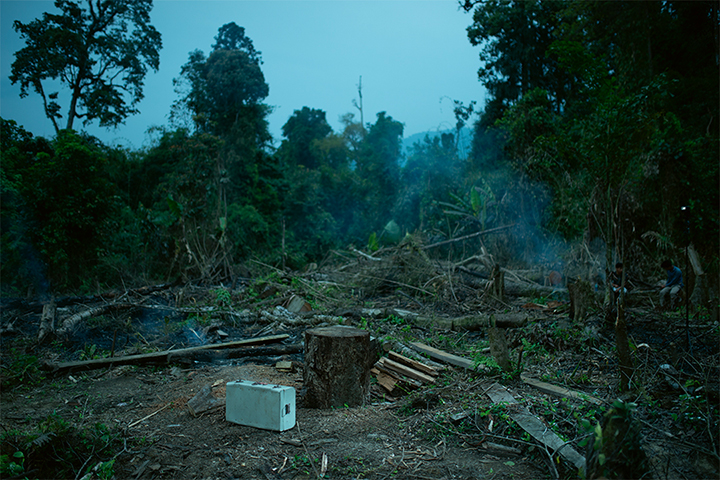
In der Lisu-Folklore hatte eine Flut das Dorf der Geschwister Lecha und Secha in den bergigen Wäldern weggespült. Als einzige Überlebende reisten sie jahrelang auf der Suche nach Ihresgleichen. Da keine anderen Überlebenden in Sicht waren, baten sie schließlich Gott um die Erlaubnis, Mann und Frau zu werden. Diese Folklore enthält alle archetypischen Merkmale, die auch heute noch bei den Lisus nachhallen – Widrigkeiten, Einsamkeit, Widerstandsfähigkeit und die Suche nach Zugehörigkeit.
Die indigene tibeto-burmesische Lisu-Gemeinschaft lebt in den unzugänglichen Dschungeln des Namdapha-Nationalparks und des Tigerreservats (NNP) an der indisch-myanmarischen Grenze in Arunachal Pradesh, Indien. Im Jahr 1983 wandelte die indische Regierung 1985 Quadratkilometer ihres Heimatlandes in den NNP um, ohne sie zu konsultieren, und erklärte sie als "Wilderer und Eindringlinge", was eine jahrzehntelange Marginalisierung zur Folge hatte. Sie leben so tief in der Wildnis, dass sie drei bis sechs Tage brauchen, um zu Fuß 120-157 km durch knietiefen Schlamm zu waten, um die nächstgelegene Stadt Miao zu erreichen.
Trotz aller Widrigkeiten leben die Lisus symbiotisch mit der Natur zusammen und erfreuen sich als autarke Gemeinschaft an deren Geheimnissen. Sie bauen sich gegenseitig ihre Häuser, behandeln Kranke, beten, feiern und trauern gemeinsam. Ihr behutsamer Umgang mit dem Leben inmitten der Dunkelheit ist erhellend. Sie wünschen sich einen Ort zu finden, an dem Mythos und Moderne zusammenleben können, ohne ihre Kultur aufzugeben. Den Wald, den sie ihr Zuhause nennen, aufzugeben, ist unvorstellbar. Prof. A. K. Ramanujan bezeichnete solche "autarken Dorfgemeinschaften" als "mythische Gebilde".
Durch die Bezugnahme auf archetypische Verbindungen zwischen Mensch, Tier und Natur (vgl. Carl Jungs Theorien) - die Enten, Pferde, das Fernsehen, der Winternebel, der Wald, die Dunkelheit und das schwer fassbare Licht - werden Gefühle des Wartens, der Liebe, des Verlusts und der Zusammengehörigkeit angedeutet. All dies evoziert eine Aura ihrer mythischen Welt sowie ihr ständiges Streben nach einer besseren Welt - das gleiche Streben, das die menschliche Ethnie im Rahmen unserer eigenen Träume, Hoffnungen und Vorstellungen verbindet.
In sieben langen Jahren (2013-19) habe ich Anleihen bei der Traumsymbolik und dem magischen Realismus gemacht und meine Praxis auf ethnografische Forschung, umfangreiche Feldarbeit, journalistische Prozesse, Folklore und eine poetische Ästhetik gestützt, um sensorisch auf ihre Gefühle und ihre Beziehung zur Natur anzuspielen - die immateriellen Kulturgüter, die sie definieren und von den urbanen hyperkapitalistischen Gesellschaften unterscheiden. Durch kreative kollaborative Vorstellungskraft untergräbt Imagined Homeland den kolonialen paternalistischen Blick und verschiebt die Grenzen der Vorstellungskraft. Auf diese Weise plädiert sie für eine Sichtweise jenseits des Anthropozentrismus, die uns dazu aufruft, wieder mit der Natur zusammenzuleben.
Danksagung: Imagined Homeland wird durch ein Kunstforschungsstipendium der India Foundation for the Arts und ein Photo Made-Stipendium der Lucie Foundation unterstützt.
Haftungsausschluss: Jede Inszenierung wurde vor Ort erstellt. Bei der Herstellung der Serie wurden keine Tiere verletzt.
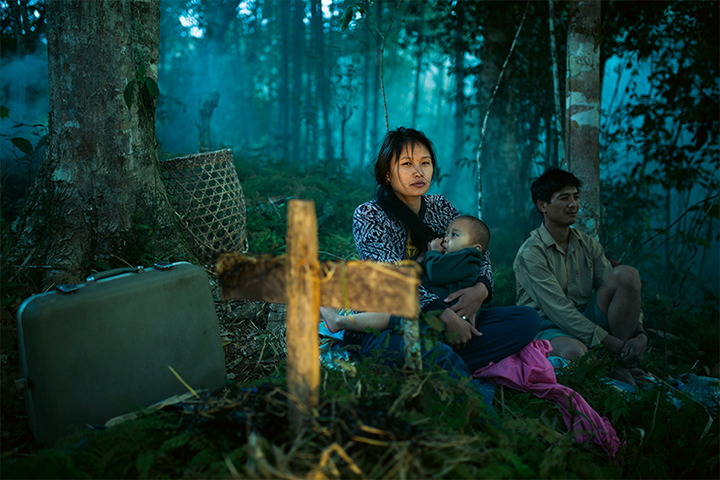
»Lisangi and Dulusu Yobin wait indefinitely in the forests of Namdapha with their Son«, 2018. Aus der Serie/From the series »Imagined Homeland«.
Fotografie/Photography.
Fine Art Pigment Print on Hahnemühle William Turner.
In Lisu folklore, a flood had swept away orphan siblings – Lecha and Secha’s village in the mountainous forests. Sole survivors, they travelled for years searching for others. With no other survivors in sight, they eventually asked for God’s permission to become man and wife. This folklore bears all the archetypal imprints that resonate with the Lisus even today - adversity, solitariness, resilience as well as the quest for belonging.
The indigenous Tibeto-Burman Lisu community lives inside the intractable jungles of Namdapha National Park & Tiger Reserve (NNP) on the Indo-Myanmar border of Arunachal Pradesh, India. In 1983, the Indian government converted 1985 sq. km. of their native land into NNP without consulting them, and declared them as ‘poachers and encroachers’ setting off decades of marginalisation. They live so deep in the wild that it takes them three-six days to trek 120-157 km on foot wading through knee deep mud to reach the nearest town Miao.
Despite the adversities, the Lisus cohabit symbiotically with nature revelling in its mysteries as a self-sufficient community. They build each other’s home, treat the sick, pray, celebrate and mourn together. Their gentle stewardship of life amidst the darkness is illuminating. They also desire to find a place where the myth and the modern can cohabit without forsaking their culture. Abandoning the forest they call ‘home’ is inconceivable. Prof. A. K. Ramanujan called such ‘self-sufficient village communities’ as ‘mythical entities’.
By referencing archetypal interconnections between man, animal and nature (ref. Carl Jung’s theories)— the ducks, horses, television, winter fog, forest, darkness and the elusive light alludes to feelings of waiting, love, loss and togetherness — all evoking an aura of their mythical world as well as their continuous quest for a better world — the same quest that binds the human race together within the context of our own dreams, hopes, and imaginations.
Made over seven long years (2013-19), I borrowed from dream symbolism, magical realism and rooted my practice in ethnographic research, extensive field work, journalistic processes, folklores, and adopted poetic aesthetics to sensorially allude towards their feelings and relationship with nature – the intangible cultural assets that define and distinguish them from the urban hyper-capitalistic societies. Through creative collaborative imagination, Imagined Homeland subverts the colonial paternalistic gaze and pushes the limits of imaginaries. In doing so, it argues for a viewpoint beyond anthropocentrism serving as an invocation for us to return to cohabiting with nature.
Acknowledgments: Imagined Homeland is supported by an Art Research Grant from the India Foundation for the Arts, and a Photo Made Scholarship from the Lucie Foundation.
Disclaimer: Each mise en scène was created on location. No animals were hurt during the making of the series.
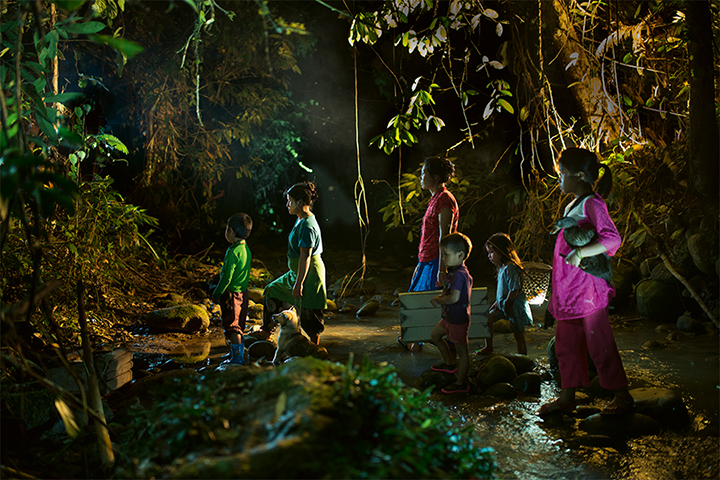
Fotografie/Photography.
Fine Art Pigment Print on Hahnemühle William Turner.
Hier können Sie ein "Making-of-Video" zur Arbeit "Exodus" von Sharbendu De anschauen:
FHere you can watch a 'making-of-video' for the work 'Exodus' by Sharbendu De:
Video anschauen / watch video
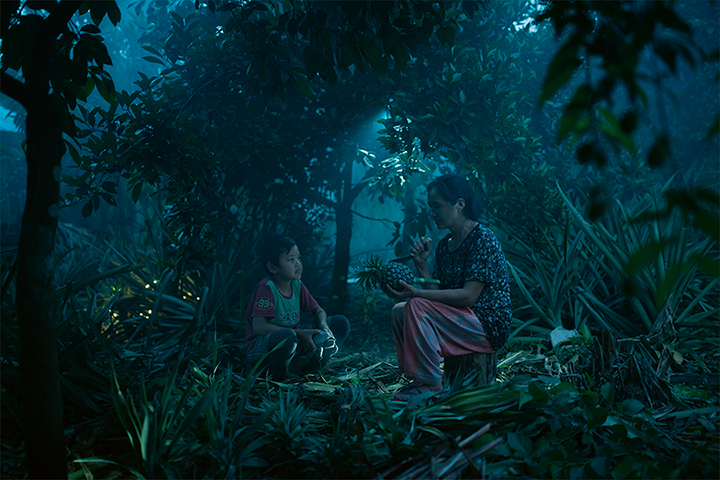
Fotografie/Photography.
Fine Art Pigment Print on Hahnemühle William Turner.
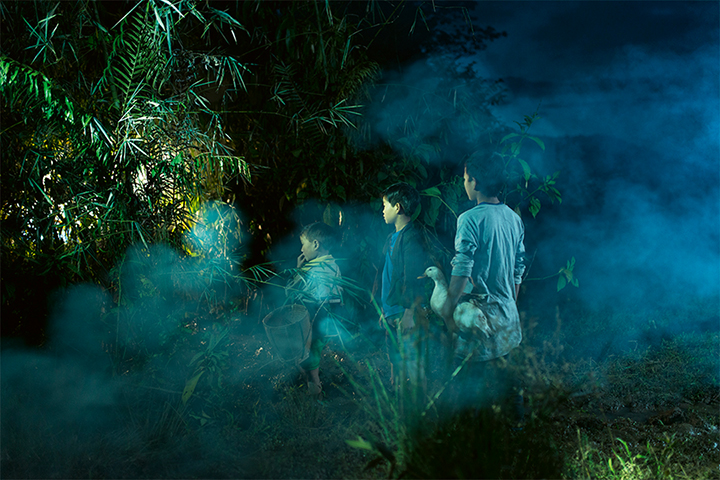
»Children Explore the Mythical Forest«. Aus der Serie/From the series »Imagined Homeland«.
Fotografie/Photography.
Fine Art Pigment Print on Hahnemühle William Turner.
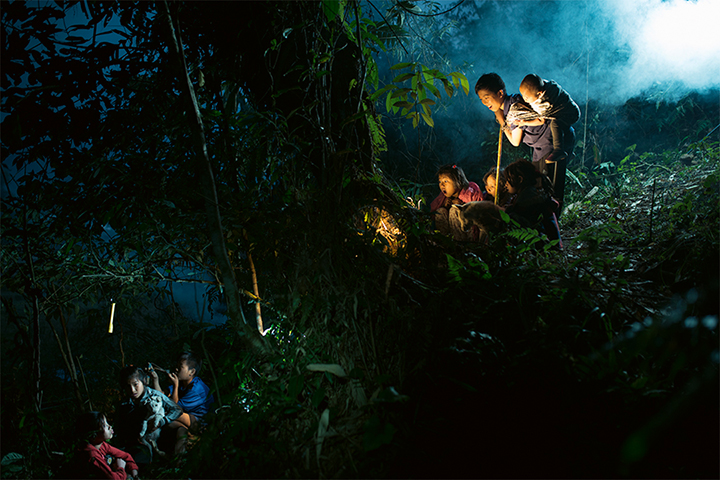
»Children Explore the Mythical Forest«. Aus der Serie/From the series »Imagined Homeland«.
Fotografie/Photography.
Fine Art Pigment Print on Hahnemühle William Turner.
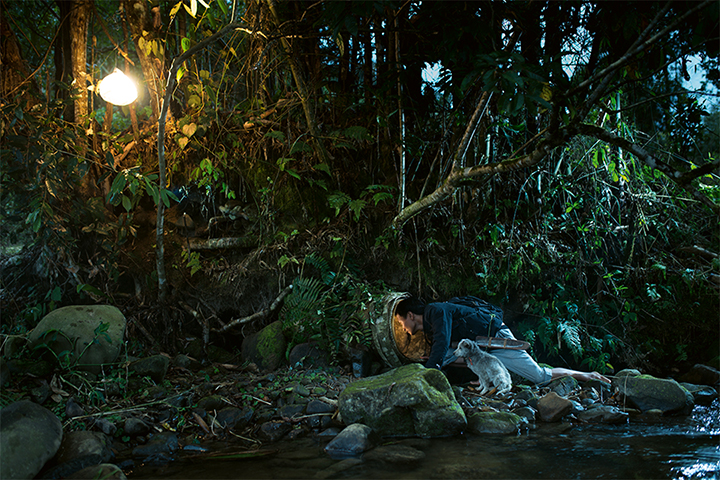
»Ngwalidew and the Portal«, 2018. Aus der Serie/From the series »Imagined Homeland«.
Fotografie/Photography.
Fine Art Pigment Print on Hahnemühle William Turner.
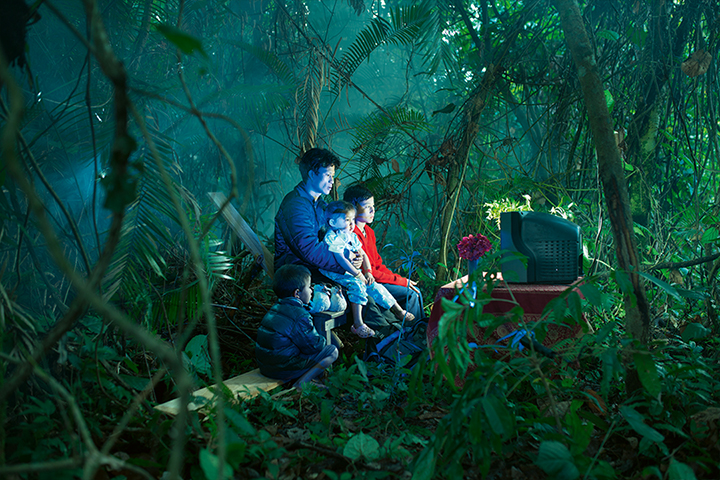
»Waiting in the Forest«, 2018. Aus der Serie/From the series »Imagined Homeland«.
Fotografie/Photography.
Fine Art Pigment Print on Hahnemühle William Turner.
© Künstlerverein Walkmühle e.V.